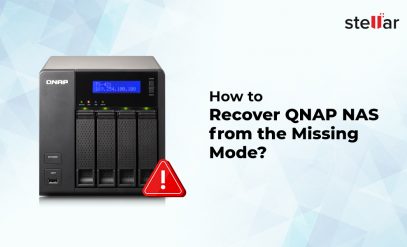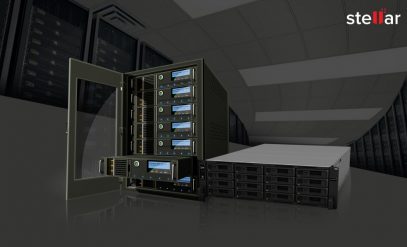What is Network Attached Storage (NAS)?
| “Network Attached Storage (NAS) is a centralized storage server that lets user access files on multiple platforms.” NAS devices are connected to a network and numerous users can easily share common files provided that they connected to the same network. It provides file storage/sharing, greater flexibility, and faster file access, with simple configurations that are easy to manage through assigned network addresses. |
|---|
NAS servers contain multiple storage devices (RAID) and leverage file sharing protocols such as AFRP, SMB, or NFS. It is one of the convenient methods of sharing files and increases the storage capacity of each connected workstation on the network. Furthermore, as file storage is centralized, it can be easily administered from any of the connected workstations.
Benefits of Using NAS devices
- Easy to configure and operate
- Affordable storage and backup solutions
- Addition of more storage spaces to the available network
- Faster data access
- Provides remote access
- Additional storage space
Minimize the risk of NAS Data Loss
NAS devices are optimal for easy file storing and sharing and have multiple benefits. It can be set up for automatic backups and often have its own operating system depending on the device. However, NAS devices are not immune to data loss and the possibility of data loss cannot be overlooked.
More likely reasons for NAS data loss
Reason 1: Human error
Accidentally deleting files, overwriting the drive, inappropriate installation, and re-formatting the device are some human errors that lead to NAS data loss.
Reason 2: Mechanical faults
RAID system is configured in such a way to compensate if one drive fails; however, the failure of multiple devices may put a burden on the overall network which may lead to NAS failure.
Reason 3: Overheating issues
Overheating also leads to drive failure; hence, provides good airflow so that drives remain cool and last longer.
Reason 4: Power failure
Voltage fluctuations and overvoltage can create issues for NAS network memory as abrupt power outages prevent disks from reintegrating to RAID.
Reason 5: Replacing a wrong disk
Replacing a wrong disk, improper rebuilding, or not replacing the faulty disk in time also leads to NAS data loss.
Reason 6: Natural catastrophes
Natural catastrophes such as fire damage, water damage, or any other disaster can easily break down a NAS network. Moreover, reliable NAS data recovery services are required to recover data in such scenarios, the reason being, that the service providers have all the necessary tools and labs to recover data from damaged NAS storage such as Qnap Nas server, Synology Nas Server, etc.
Also Read: Top causes of data loss in NAS Servers
Protecting NAS data
You may encounter data loss in NAS; however, you can minimize that risk just by implementing these useful tips.
Tip 1: Control data access rights
Although file-sharing by multiple users is one of the advantages of NAS, it could be a downside as well. For instance, a user might delete data without knowing that other users may need it. Therefore, to prevent data deletion, you should control data access rights.
TIP 2: Automatic backup
NAS device allows automatic data backup but the more backup you will have, the greater the chance of restoring data in worst cases will be. Thereby, you should periodically back up all your data on external devices as well. Further, you should keep additional offsite backups and encrypt your data stored on external devices.
TIP 3: Properly configuring NAS
It is important to configure the NAS system in a proper way to manage and control NAS devices in an efficient manner. Generally, NAS is set up with RAID configuration; hence, you should select a suitable RAID (RAID O, RAID 1, RAID 5, RAID 6, and RAID 10) configuration depending on your requirements.
TIP 4: Proper documentation
Proper documentation is key to minimizing NAS data loss. It is equally important to jot down details such as file systems used, controller version, BIOS version, etc. as proper documentation helps in data recovery and device repairing.
TIP 5: Uninterrupted power supply
Invest in an uninterrupted power supply to prevent NAS from being affected by an abrupt power outage.
TIP 6: Using standardized disks
Always use disks that are compatible with the NAS system. Further, use reliable disks with standard file systems. Nas-optimized drives lower the total cost of ownership, avoid downtime, and decrease outages. Besides, standard drives increase storage uptime and overall reliability to a great extent.
TIP 7: Preparing disaster plans
You should prepare disaster plans so that necessary measures can be implemented to restore all your data. Additionally, in case of emergencies, you should avoid attempting data recovery on your own.
Read here why data recovery is essential for NAS and RAID systems when there is no backup?







